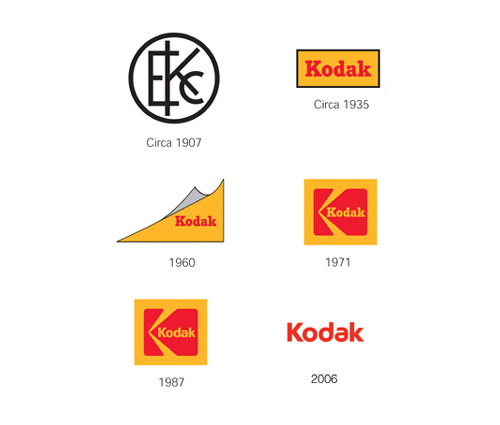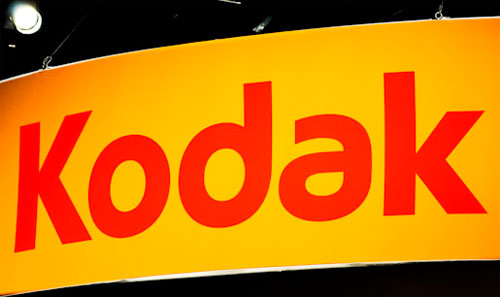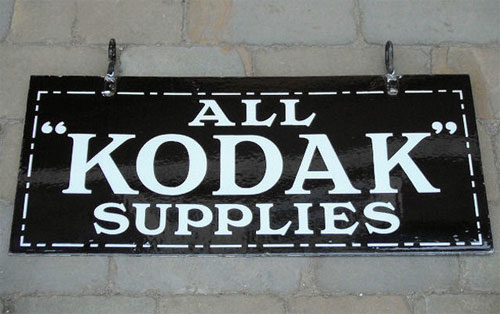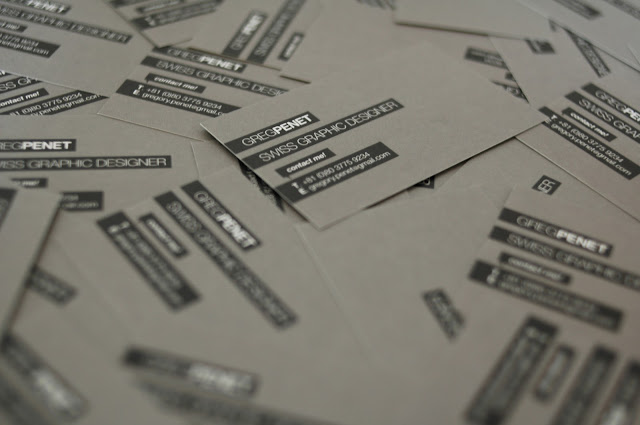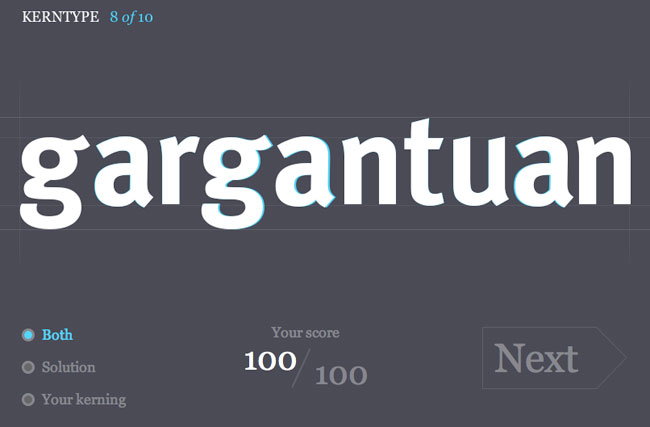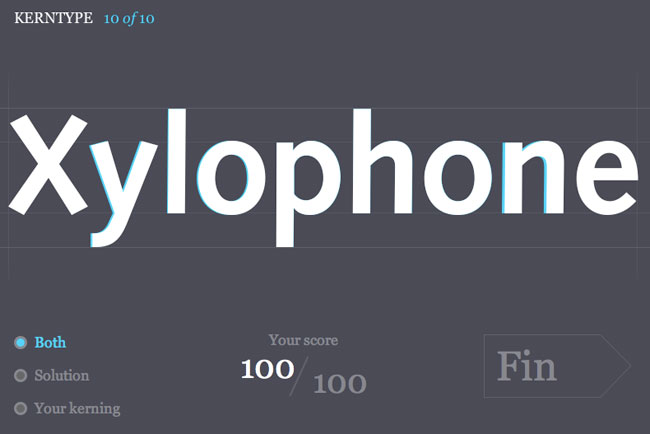Many designers are outraged by the growing number of spec and crowdsourcing sites offering logo work for extremely low prices. But what kind of service do these sites really supply? London design studio Mat Dolphin decided to try and find out...
One of the services we offer as a design agency, write Mat Dolphin's Tom Actman and Phil Cook, is logo design. No surprises then when we recently stumbled upon another agency offering the same service. So far, so average - the majority of graphic design agencies throughout the world do exactly the same. The difference with this one, however, was the costing of their work.
$42. That simple. For $42 you can get a logo designed with two rounds of amends and a number of different files formats sent to you. Sceptical of the quality of the work and a little surprised at the pricing structure and business model, we shared the find with our loyal Twitter following in our usual measured and level-headed style...
In short, the ever opinionated 'design community' weren't too happy about the idea of logos being punted out like Happy Meals. The general consensus was that the time it takes to research, brainstorm, design, develop, artwork and subsequently amend a logo of a relatively decent standard could not be sufficiently covered by such a small cost. This got us thinking. We decided to conduct an experiment. Googling 'cheap logos' gave us plenty of options for 'quality logo design services for a fixed low cost' so we pulled on our fictional overalls and got in touch with a company offering said service to enquire on behalf of our newly-imagined company - 'Dolphin Plumbing Services'.
Commissioning a cheap logo simply to sneer about how we reckon we could have done a better job would be too easy and not achieve a huge amount. Instead, we wanted to approach the company as if we had no experience or interest in graphic design and see what the process is like for the 'average punter'. Also, how the experience differs from the service we offer. We made a point of letting them lead us and not getting all 'designer-y' with them. This wasn't an opportunity to lecture them about kerning, for this experiment we didn't care about the quality of design, we simply wanted to explore the process of purchasing a logo to stick on the side of our non-existent van.
The first company we contacted offered, among plenty of other things, bespoke logo designs and unlimited revisions (which we thought was rather excessive) for only £8.99+VAT. Bargain! It seemed too good to be true and, drum roll... it was - they are yet to return our emails. Not a good start.
Undeterred, we found another company offering a similar service. Yet again, they offered unlimited revisions, so we thought we'd give them a fair amount of feedback to deal with, nothing too unreasonable, just enough to get our money's worth. They also promised a 1-3 day turnaround for all artwork and amends, so we decided to hold them to that and chase them if they were late. Dolphin Plumbing Services - firm but fair. They were slightly more pricey at £25 but we thought it was worth it in the name of investigative journalism, so we sent the email.

One of the services we offer as a design agency, write Mat Dolphin's Tom Actman and Phil Cook, is logo design. No surprises then when we recently stumbled upon another agency offering the same service. So far, so average - the majority of graphic design agencies throughout the world do exactly the same. The difference with this one, however, was the costing of their work.
$42. That simple. For $42 you can get a logo designed with two rounds of amends and a number of different files formats sent to you. Sceptical of the quality of the work and a little surprised at the pricing structure and business model, we shared the find with our loyal Twitter following in our usual measured and level-headed style...
In short, the ever opinionated 'design community' weren't too happy about the idea of logos being punted out like Happy Meals. The general consensus was that the time it takes to research, brainstorm, design, develop, artwork and subsequently amend a logo of a relatively decent standard could not be sufficiently covered by such a small cost. This got us thinking. We decided to conduct an experiment. Googling 'cheap logos' gave us plenty of options for 'quality logo design services for a fixed low cost' so we pulled on our fictional overalls and got in touch with a company offering said service to enquire on behalf of our newly-imagined company - 'Dolphin Plumbing Services'.
Commissioning a cheap logo simply to sneer about how we reckon we could have done a better job would be too easy and not achieve a huge amount. Instead, we wanted to approach the company as if we had no experience or interest in graphic design and see what the process is like for the 'average punter'. Also, how the experience differs from the service we offer. We made a point of letting them lead us and not getting all 'designer-y' with them. This wasn't an opportunity to lecture them about kerning, for this experiment we didn't care about the quality of design, we simply wanted to explore the process of purchasing a logo to stick on the side of our non-existent van.
The first company we contacted offered, among plenty of other things, bespoke logo designs and unlimited revisions (which we thought was rather excessive) for only £8.99+VAT. Bargain! It seemed too good to be true and, drum roll... it was - they are yet to return our emails. Not a good start.
Undeterred, we found another company offering a similar service. Yet again, they offered unlimited revisions, so we thought we'd give them a fair amount of feedback to deal with, nothing too unreasonable, just enough to get our money's worth. They also promised a 1-3 day turnaround for all artwork and amends, so we decided to hold them to that and chase them if they were late. Dolphin Plumbing Services - firm but fair. They were slightly more pricey at £25 but we thought it was worth it in the name of investigative journalism, so we sent the email.

The very same day, we received a response asking for payment! If nothing else, they were quick, and at least they'd replied. We eagerly handed-over our bank details (without any guarantees, to the random internet company we'd never heard of two hours previously) and waited to see what happened next.
Less than an hour later, we received an email granting us access to our own personal account. We were told to wait for 48 hours before receiving the initial designs. So far the process hadn't been too painful, we'd done our bit and the real work was now down to their designers. All that was left to do was wait...
Two days later, an email with the subject 'Your first design samples' was sitting our inbox - the experiment had started to get interesting. We logged into the account and saw these six designs (below) awaiting our feedback.


The quality of the logos is something we're going to comment on later, but regardless of how good the initial designs are, we have a starting point. Regarding the first of our unlimited revisions, we wanted to ensure what we were requesting was reasonable and similar to the kind of feedback the company would usually get. We weren't interested in testing their patience for the sake of it. Our first round of feedback was as follows:

Once again, we sat tight, staring at our inbox waiting for what could potentially become the brand new Dolphin Plumbing Services logo. Can you feel the tension building? This time we only had to wait one day! Another email arrived letting us know that all we had to do was log into our account and we would find the latest logo designs waiting for us - we did, and they were!

This time around our feedback was pretty simple:

This didn't prove too much of a test for our new design slaves, who responded with the changes, yet again, in just one day. Here's what they came back with.

We were getting to the point where the discussions had gone far enough to get a reasonable idea of the process and it was time for us to wrap this baby up. We issued one final round of feedback, for good measure:

Which resulted in the following. Ladies and gentlemen, allow us to proudly present, the logo for the finest fictitious plumbing outfit since Super Mario Brothers - Dolphin Plumbing Services:

Job done.
The feedback about the colour of the circle had been completely ignored but we pretended not to notice and responded with a grateful approval and requested the logo as high resolution JPGs, PDFs and vector EPS / AI files. These were promptly sent the next day. One techy point to make - the vector logos hadn't been outlined and there were no fonts accompanying the files. This means that if we did in fact have a van or signage in need of vinyl lettering, we'd be a bit stuck. We would guess the vast majority of customers using these services wouldn't have the knowledge or inclination to specifically request fonts, let alone own the software to discover they were missing. It seems like the company we used fell at the last hurdle somewhat but perhaps the rush to complete the job and move onto the next artwork carried out at light-speed is to blame for the oversight.
Anyway, the experiment had concluded, now for the analysis.
The easiest thing here would be to tear the design work apart and criticise how it simply wasn't very good. It wasn't. But it seems as if that would be over simplifying the point. We paid an incredibly small amount for what must've taken somebody, somewhere, a reasonable amount of time to do. Even a competent designer bashing out the work as quickly as possible would've had to spend a while producing six logos with three sets of revisions. There's also the time it takes to read our emails, save the amended files, upload them to our account and let us know they're there. It's impossible to say how long that would've taken (and we're under no illusion that the lovely emails we received were personally written to us) but was this time and labour all covered by our measly £25?
As designers, our time, creativity, experience and technical skills are the only things we're actually selling. And we're not surprised that how anyone with the right software can do what we do and sell it for a fraction of the cost proves irritating and perhaps even insulting to the majority of designers. But does the plumber who simply wants something to stick on a business card really care when he can get the job done for such a small amount of money? The process we went through was quick, easy and required very little hassle on our part. Once we found a company who actually responded to us, all we had to do was pay, look at designs and tell them what we wanted them to change. Assuming the role of someone with limited knowledge and opinions on typography, layout and colour, the service offered to us was more than agreeable for what we paid.
However, there is still the angry mob of designers to deal with. First off, it's worth thinking about what they're actually angry about. We don't think it's because their cover's been blown and they can no longer charge huge amounts of cash for knocking up a quick logo. The issue, in our opinion, is more the fact that taking shortcuts that allow the work to be produced for a sum as small as £25 both creates work of a lower quality and lowers the value of what we do in the eyes of those outside of the design industry.
As designers, our time, creativity, experience and technical skills are the only things we're actually selling. And we're not surprised that how anyone with the right software can do what we do and sell it for a fraction of the cost proves irritating and perhaps even insulting to the majority of designers. But does the plumber who simply wants something to stick on a business card really care when he can get the job done for such a small amount of money? The process we went through was quick, easy and required very little hassle on our part. Once we found a company who actually responded to us, all we had to do was pay, look at designs and tell them what we wanted them to change. Assuming the role of someone with limited knowledge and opinions on typography, layout and colour, the service offered to us was more than agreeable for what we paid.
However, there is still the angry mob of designers to deal with. First off, it's worth thinking about what they're actually angry about. We don't think it's because their cover's been blown and they can no longer charge huge amounts of cash for knocking up a quick logo. The issue, in our opinion, is more the fact that taking shortcuts that allow the work to be produced for a sum as small as £25 both creates work of a lower quality and lowers the value of what we do in the eyes of those outside of the design industry.
Like many other products and services, it's never going to be too hard to find a cheaper option. But, as the painfully obvious saying goes, you get what you pay for. Buy a cheap car, it'll break down more often. Buy a cheap meal, it won't taste very nice. Buy a cheap haircut... you get the idea. If Phil the plumber decides to go for the £25 logo purely based on cost, his service simply won't look premium. Maybe this won't be a problem as many of his customers aren't going to care too much about the typography when their kitchen is flooding, but design matters, and we're sure we've all instantly disregarded companies based solely on the look of their logo, website or shop-frontage. It's similar to pizza menus on your doormat - you're not going to pay much but you know it won't be fine-dining.
Maybe he doesn't want his service to look premium. He's a down-to-earth guy making an honest living for a fair price and he wants his logo to reflect that. Fair enough. But at no point throughout the process were we asked any questions about this. It was far too easy to let the designers get on with designing what they thought was right for a company they knew next-to-nothing about. Without this knowledge, can you really create something of any value, or are you simply choosing random fonts and adding clichéd clipart images based on the name of the company?
So, the design is never to going be considered at any great length - because there simply isn't the time to do so - and there's a good chance the final design may not be appropriate for its purpose.
Maybe he doesn't want his service to look premium. He's a down-to-earth guy making an honest living for a fair price and he wants his logo to reflect that. Fair enough. But at no point throughout the process were we asked any questions about this. It was far too easy to let the designers get on with designing what they thought was right for a company they knew next-to-nothing about. Without this knowledge, can you really create something of any value, or are you simply choosing random fonts and adding clichéd clipart images based on the name of the company?
So, the design is never to going be considered at any great length - because there simply isn't the time to do so - and there's a good chance the final design may not be appropriate for its purpose.
The end result? Cheap design that looks cheap and is less effective.
But is there a place in the industry for logo design being sold in this way? Unfortunately, we think the answer is yes. People or companies who aren't particularly interested in the way they present themselves can't be blamed for spending as little money as possible on a service they don't see value in. Is it damaging to the industry as a whole? Again, I'm afraid the answer is yes. Poor design can never be a good thing, for obvious reasons.
So what happens now? Do we rise up and fight back against these companies? Do we boycott? Do we drop our prices to £20 a logo, no questions asked? Feel free, but we won't be joining you. A far better defence is to produce well-considered, fairly-priced design that includes the client in the process, asks the right questions, challenges the brief, considers the problem from the clients perspective and provides an effective solution. This, done well, is the only thing that can differentiate what we do from the 'lowest price gets the job' outfits.
The conclusion of our experiment? You get what you pay for. The important thing to remember is to make your service good value, regardless of how much it costs.
Tom and Phil
matdolphin.com
Follow Mat Dolphin on Twitter here
So what happens now? Do we rise up and fight back against these companies? Do we boycott? Do we drop our prices to £20 a logo, no questions asked? Feel free, but we won't be joining you. A far better defence is to produce well-considered, fairly-priced design that includes the client in the process, asks the right questions, challenges the brief, considers the problem from the clients perspective and provides an effective solution. This, done well, is the only thing that can differentiate what we do from the 'lowest price gets the job' outfits.
The conclusion of our experiment? You get what you pay for. The important thing to remember is to make your service good value, regardless of how much it costs.
Tom and Phil
matdolphin.com
Follow Mat Dolphin on Twitter here


